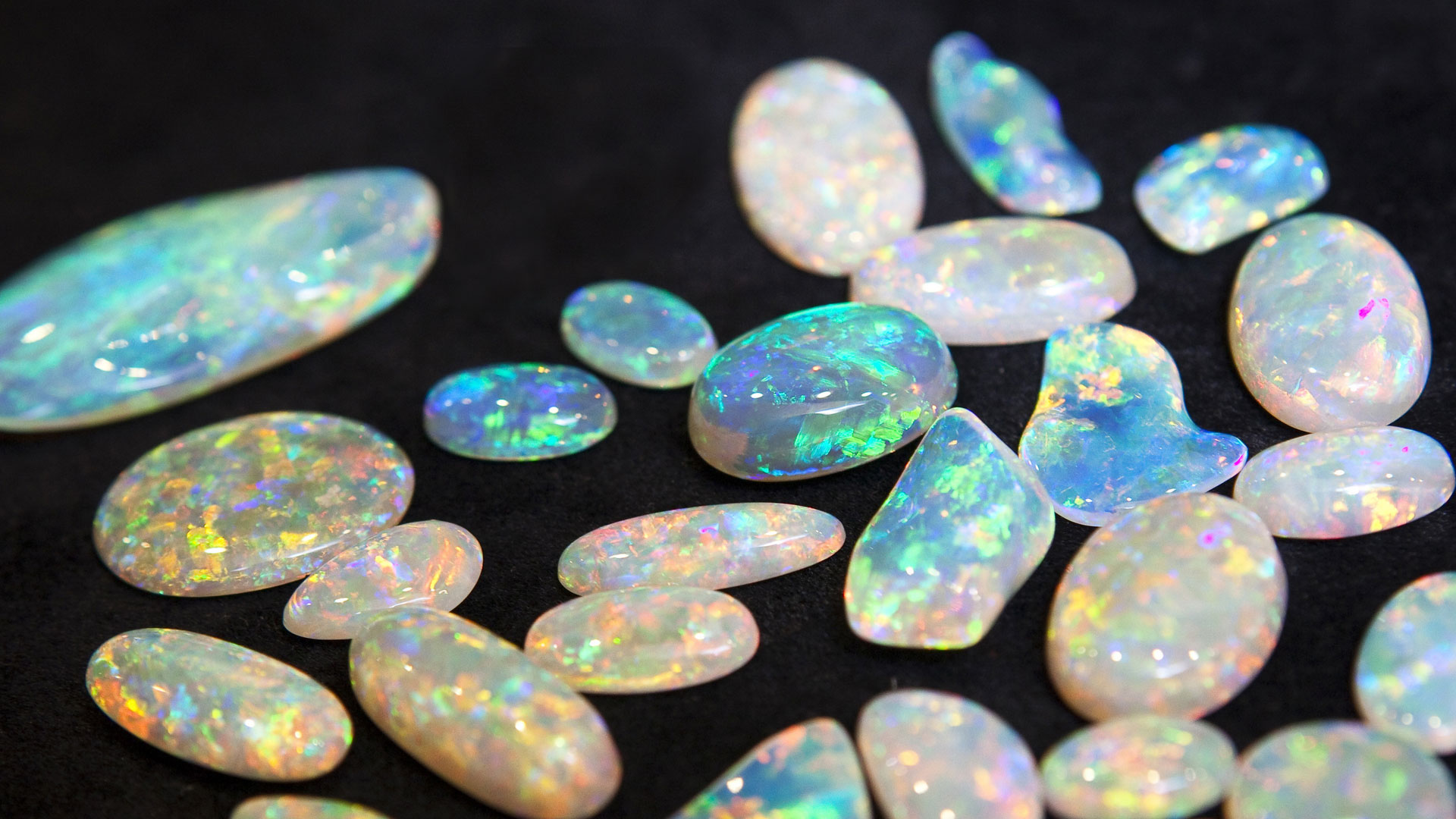
What you need to know about opals
07.08.16
What are opals?
Most minerals are crystalline in nature but opals are not. Instead, precious opals are amorphous like glass, which means they lack the definite crystal form.
Opal is formed from trillions of submicroscopic spheres of silicone dioxide. Their colour depends on the size of these spheres and the wavelength of light that is broken out through them.
To put it simple, opal works like a rainbow; with sunlight passing through millions of water drops creating a spectrum of colours. Depending on to what degree the light is bent or refracted, colours vary from red, which is bent least, to orange, yellow, green, blue and violet, which is bent the most.
How opal is formed?
Opal is formed when electrolyte interacts with kaolinite clay. An electrolyte is a substance that produces an essential for life electrically conducting solution when dissolved in water. Kaolinite is a two-layer clay that has one layer of silicone dioxide and one layer of mixed silica, aluminium and trace elements. Kaolinite usually comes in the form of volcanic ash. Miners refer to it as to “opal dirt”, to describe the thin layer of clay where opal is found.
Weathering model. Opal is developed by weathering at some point after the rocks in which it is found; from a solution of silicon dioxide and water. As water runs down through the earth, it carries silica-rich solution into naturally-caused cracks and voids. When the water evaporates, it leaves behind a silica deposit; which eventually becomes an opal after several repetitions of the cycle.
Syntectonic model. According to this version, opal is formed from mineral-bearing waters rising towards the surface under pressure. As the water dissipates into areas of lower pressure, the opal is deposited as veins where sandstone (source of silica) and claystone layers are distorted.
Microbe model. Various types of microbe fossils, primarily aerobic bacteria, have been identified within samples of opal from the Lightning Ridge area, Australia. This model proposes that opal-bearing claystone provides an ideal habitat for the microbes to feed and breed, which eventually creates favourable physical and chemical conditions for the formation of opal.
Where most opal is found?
Most opals come from Australia, which has three major types of precious opal – black opals from Lightning Ridge, white opals from the South of the country, and matrix and boulder opals from Queensland.
The boulder opal differs from other types of opal, as it is formed inside an ironstone concretion caused by ionisation; while matrix opal occurs as a network of veins/ infilling of voids or between grains of the host rock.
Much of the world’s opal production is not precious. It is called potch or common opal, as it doesn’t show a play of colour.




